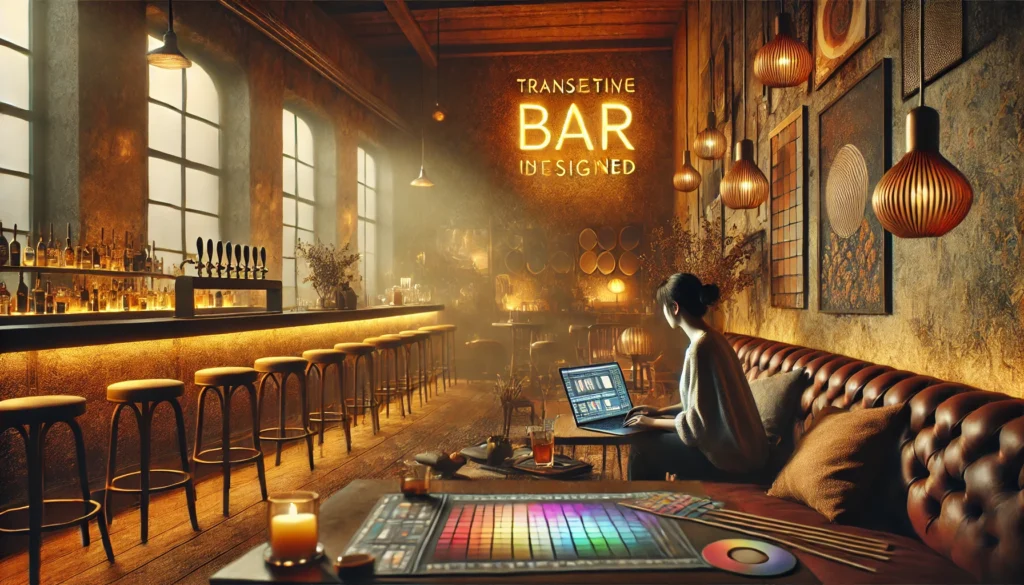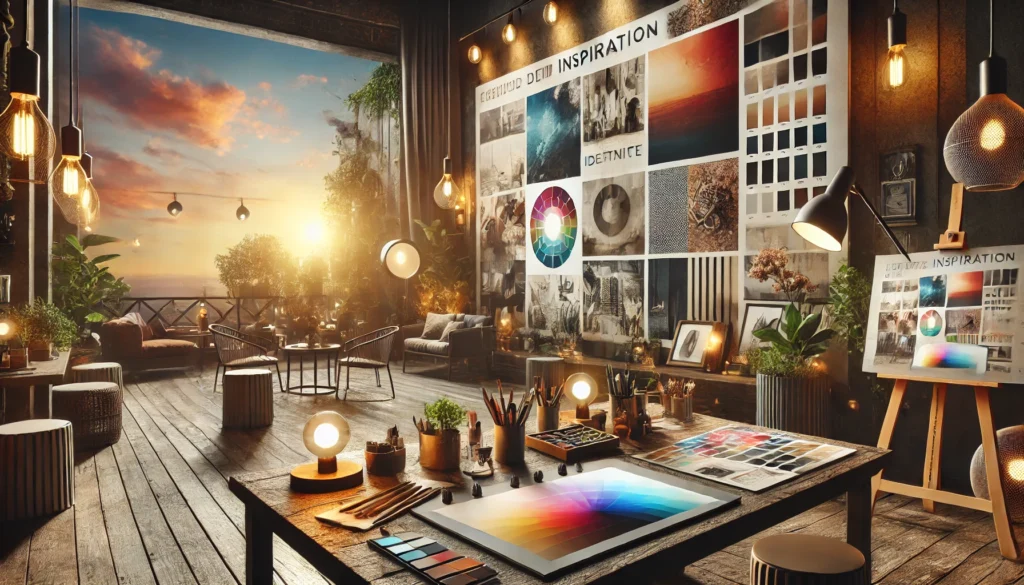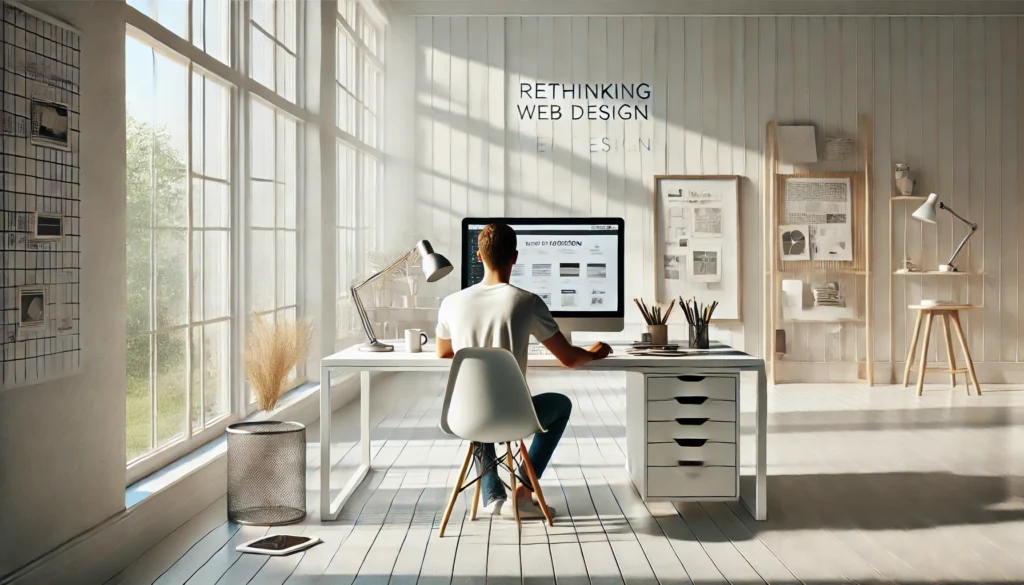Your website is more than just a digital storefront. It’s an extension of your Brand identity, reflecting your brand’s personality, values, and story. Yet, many businesses struggle with creating a Brand identity that feels fresh, original, and engaging. Instead, they fall into the trap of generic templates and predictable layouts that fail to leave a lasting impression.
If you’ve ever scrolled through websites and thought, They all look the same, you’re not alone. In an online world flooded with similar designs, how do you ensure your brand stands out? The secret lies in looking beyond the digital space for inspiration.
Think about the last time you walked into a beautifully designed restaurant or a stylish bar. The ambience, lighting, textures, and even the way the menu is presented all contribute to an immersive experience. What if you could capture that same essence and translate it into your website design?

This article explores how unconventional spaces—like bars, art galleries, and boutique hotels—can serve as rich sources of inspiration for crafting a unique web design theme. You’ll learn how to infuse personality, mood, and storytelling into your website. Ready to break away from the ordinary and design something truly distinctive? Let’s dive in.
Understanding Brand Identity in Web Design
A strong Brand Identity in Web Design is the foundation of any successful website. It’s not just about a logo or colour scheme—it’s about crafting an experience that resonates with your audience. Here’s how to establish a unique and compelling Brand Identity in Web Design:
- Define Your Brand’s Core Message – Before jumping into design, ask yourself: What does my brand stand for? What emotions should it evoke? A luxury bar might want a sleek, dark aesthetic, while a creative agency might go for bold and vibrant tones.
- Use Visual Storytelling – Consider how bars and restaurants use design to create an atmosphere. Dim lighting, rustic wooden textures, or modern industrial decor all contribute to a unique identity. Apply the same principles to your website by selecting fonts, imagery, and layouts that align with your brand’s mood.
- Create Consistency Across Platforms – Your website should seamlessly match your social media, packaging, and even physical space (if applicable). A well-known example is Starbucks, where every element—from website design to store interiors—maintains a cohesive aesthetic and tone. Businesses that maintain consistent branding across all platforms can see revenue increases of up to 20% (WebAlive).
- Engage Emotionally with Your Audience – Think beyond visuals. The best brands craft a feeling. A brand like Apple doesn’t just sell technology; it sells innovation and exclusivity. Similarly, your website should communicate the core experience you want users to have. With 81% of consumers needing to trust a brand before making a purchase, a compelling and authentic identity is essential (Exploding Topics).
By taking cues from immersive real-world spaces, you can develop a Brand Identity that sets you apart online. A well-thought-out design builds credibility, encourages engagement, and ensures visitors remember your brand long after they leave your site. Considering that 55% of first impressions are based on visuals, the look and feel of your site matter more than ever (Inkbot Design).
Finding Inspiration for Brand Identity in Unconventional Spaces

A compelling Brand Identity often starts in the most unexpected places. Bars, cafés, and art galleries offer immersive experiences that can spark creative ideas for web design. Here’s how to draw inspiration from unconventional spaces:
- Explore the Ambience – Consider how different environments make you feel. A cosy coffee shop with warm lighting and rustic wood accents creates a completely different atmosphere than a sleek rooftop bar with neon signs. Use these elements—colour schemes, textures, and layouts—as inspiration for your website.
- Translate Mood into Design – Bars and restaurants design their spaces to influence customer emotions. Apply this principle to web design by incorporating atmospheric elements such as dynamic lighting effects, interactive backgrounds, or elegant typography that evokes the desired brand experience.
- Use Layout and Flow – Just as a well-designed bar guides customers effortlessly from entry to seating to service, your website should guide visitors through an intuitive journey. Think about spacing, navigation, and how users engage with your content from the homepage to checkout.
- Capture the Storytelling Element – Many successful venues have a compelling story. Whether it’s a historic speakeasy or a minimalist coffee shop, their branding reflects their identity. Your website should do the same, creating an immersive digital experience that aligns with your brand’s backstory.
Designing a Website with a Distinctive Brand Identity
To translate unconventional inspiration into an effective digital presence, follow these actionable steps:
- Define Your Core Aesthetic
- Based on your inspirations, choose a design direction.
- Whether it’s industrial, minimalist, or retro, ensure that your brand’s personality is evident in the visual elements. – Based on your inspirations, choose a design direction. Whether it’s industrial, minimalist, or retro, ensure that your brand’s personality is evident in the visual elements.
- Choose the Right Typography and Colours – Just as a bar’s lighting sets the mood, typography and colours influence user perception. A high-end brand might use sleek, modern fonts with deep hues, while a playful brand might opt for vibrant palettes.
- Integrate Interactive Elements – Add subtle animations, hover effects, or scrolling transitions that mimic the engagement customers feel in a well-designed physical space.
- Ensure Mobile-Friendliness – Many users will experience your brand on the mobile first, so design with responsiveness in mind to maintain consistency across devices.
Case Studies of Successful Unique Brand Identities
Real-world examples of successful brand identities offer valuable insights into how design choices influence perception and engagement. By examining these brands, we can better understand how elements like storytelling, consistency, and aesthetic choices come together to create a cohesive experience.
- The Alchemist Bar – Their website mirrors their physical locations’ mystical ambience with dark, moody visuals, animated smoke effects, and engaging storytelling elements.
- Blue Bottle Coffee – A brand that seamlessly integrates its in-store experience into its digital presence, using clean design, soft colours, and storytelling to engage customers.
- Glossier – This beauty brand blends minimalism with an editorial feel, creating a site that feels as polished as its in-store experience.
Elevate Your Brand Identity with Inspired Web Design
Your website should be more than a digital space—it should be an experience. By drawing inspiration from unconventional environments, you can create a web presence that resonates with your audience on an emotional level. Whether it’s the warm familiarity of a café or the sleek modernity of a rooftop bar, these elements can be woven into your site’s design, ensuring a unique and engaging Brand Identity.
Now is the Time to Rethink Your Web Design Approach!

Start by identifying what makes your brand special and translating that into a cohesive digital experience. If you’re ready to build a website that truly reflects your vision, consider working with a professional, like PBR Web Design, who can bring your brand identity to life.
Their expertise can ensure your design choices align seamlessly with user experience and business goals. Take the next step and build a website that not only looks good but feels unforgettable.